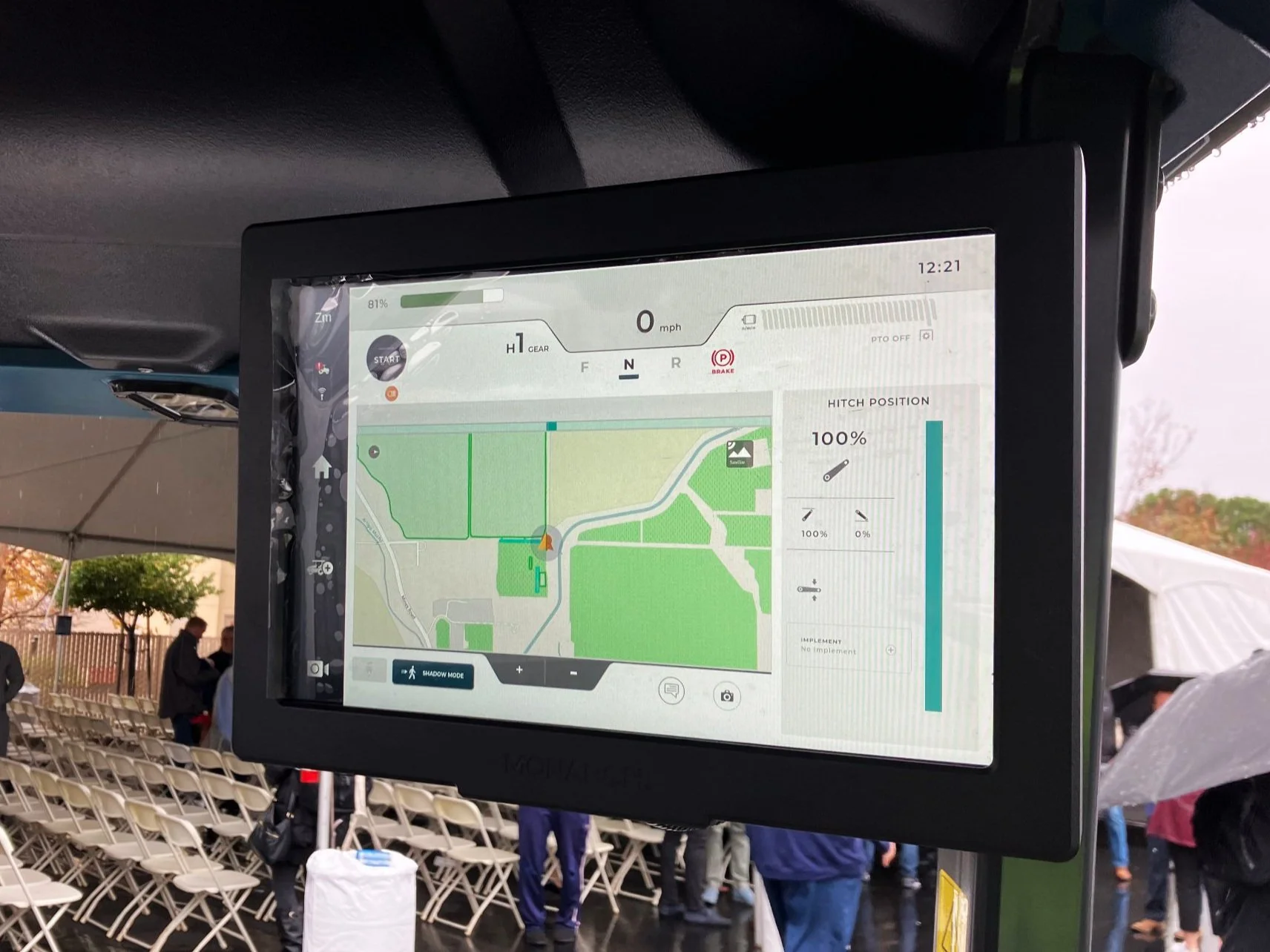Monarch Brings Affordable EV Technological Tour-De-Force to Agriculture
By Edward A. Sanchez — Dec. 2, 2022
While we’re still waiting for the autonomous age for on-road vehicles, Monarch Tractor is bringing the promise of autonomy down to the farm – literally. With the debut of its MK-V tractor, the Northern California-based startup is looking to apply technology to a sector that’s not often associated with it, at least not in most of the general public’s mind.
2019 was the peak “hype cycle” for autonomous vehicles, with the industry’s boosters promising a robo-car revolution just a year or two away, with millions being whisked about in driverless cars, ushering in a new era of mobility for minors, the disabled, and the elderly. While we have some Level 2 “highway pilot” type systems on the market, any large-scale efforts at true human-less autonomy remain in the embryonic stage at best. The Class 8 truck sector is looking at autonomous technology closely for its promise of closing the labor gap in the heavy truck sector, as well as reducing accidents. Yet like passenger vehicles, heavy trucks still have a litany of DOT, NHTSA, and state-level safety and operational regulations they must adhere to.
While the agricultural sector also has its own regulations, for all intents and purposes, farm and agricultural vehicles are considered “off-road” and therefore subject to a much less rigorous gauntlet of safety and regulatory hurdles. This makes the agricultural sector one of the best practical applications for autonomous vehicle technology at the moment.
The promise of programmable and remotely-operated EV tractors opens up a world of possibilities.
The leadership team at Monarch Tractor saw the opportunity to bridge the critical divide between environmental friendliness and profitability, which is a struggle in the low-margin agricultural industry. Besides the high cost of diesel fuel, farmers are also often faced with the choice of using chemical fertilizer and pesticides, or much more labor-intensive methods of managing weed and insect infestations that require human or machine inspection or intervention.
Monarch has received investment from CNH Industrial, Japanese auto parts manufacturer Musashi Seimitsu Industry Co., and VST Tillers Tractors. The tech suite features Nvidia Jetson Xavier NX SOMs (systems-on-module), an embedded 4G LTE modem, and an all-vision (cameras) sensor suite. Scale production of the MK-V will begin in the first quarter of 2023 at Foxconn’s Lordstown, Ohio, manufacturing facility. Small-scale production is currently happening at Monarch’s Livermore, Calif., headquarters.
An array of cameras coupled with different autonomous requirements from street vehicles mean the Monarch MK-V needn’t always have a driver.
While the MK-V does carry approximately a 50% price premium over an equivalent-sized diesel tractor, its significant advantages in technology and autonomy could help pay for themselves in a matter of just a few years, not to mention significantly lower fuel, maintenance, and operational expenses. Monarch touts the MK-V as “driver-optional” meaning it can be operated with a human driver, or deployed in the field and managed through a desktop or mobile app. The app or desktop portal can be used to manage an entire fleet of tractors, and with a 14-hour runtime, the tractors could be deployed at night, or in conditions that would otherwise be inhospitable for human operation.
While the current iteration has a seat, steering wheel, pedals, and a joystick to control attachments and accessories, company representatives say they envision a lineup of different models, some designed to be operated solely as remote or autonomous equipment (i.e. no provision for ride-on human operation).
The company has said the most interest has come from the eco-conscious West Coast of the U.S., but that it has received interest and inquiries from around the globe. One of the early use cases for the tractor was as a shared asset between multiple farms and farmers in developing markets such as India, where the tractor’s autonomous capabilities could be leveraged to allow the farmers to spend more time on business management rather than spending hours behind the wheel of the tractor.
The Monarch MK-V EV tractor trades traditional gauges for a modern interface.
Those working in the trades (agriculture broadly included), are all about practicality, pragmatism, and doing things the most efficient way possible, and at the lowest cost. Although there are some internal-combustion stalwarts that look upon electrification with a skeptical eye, it’s not so much the distrust of electrification per se, but rather its current shortcomings in terms of time efficiency. It takes 5-10 minutes to fill the tank on an HD diesel truck. There are no EV HD trucks at the moment, and refueling time, and the sparse (and often unreliable) DC fast charging infrastructure are likely a prime factor. With tractors inherently lower speeds, the focus is more on time (longevity) of operation than speed. Now that EV and battery technologies have reached a level of maturity and development where practical use is a reality, agriculture seems like a natural application.
(Images courtesy Edward A. Sanchez)
- Store - Podcast - Facebook - Google News - Twitter -











